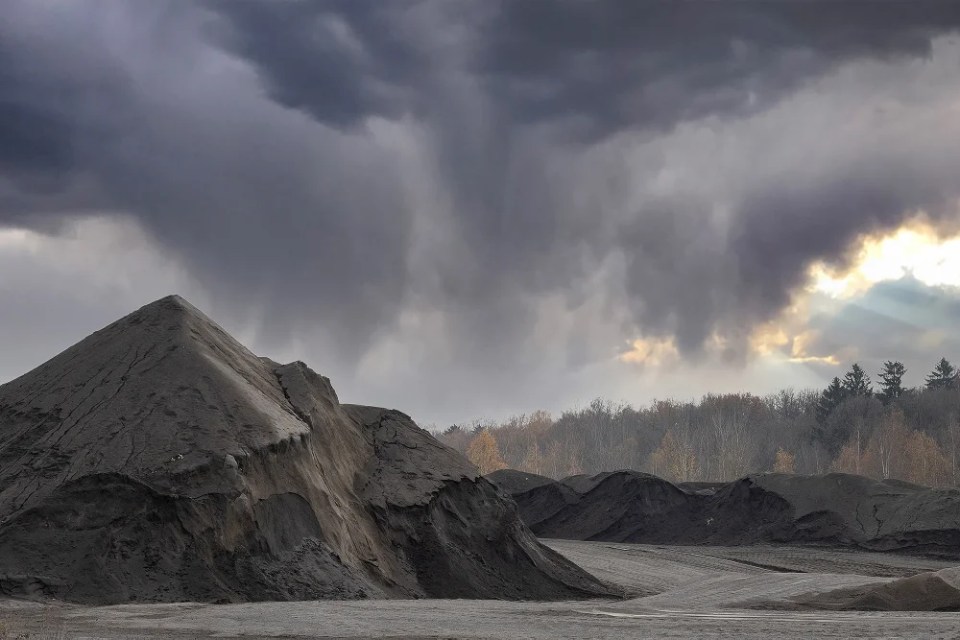Rocks can pull carbon out of the air more inexpensively than machines. But can the process be scaled?

Scientists have discovered what appears to be a relatively simple and cheap method of removing carbon dioxide from the world’s rapidly warming atmosphere. It was inspired by academic studies exploring the natural breakdown of rocks as they are exposed to weather.
Now companies are working with rock quarries, truckers and farmers to scale up a process that could suck climate pollution out of the sky and turn it into a harmless substance that eventually washes into oceans and other waterways.
The method is called enhanced rock weathering (ERW), and the main material is a powdery dust made from basalt, the most abundant form of volcanic rock on the planet.
Hundreds of businesspeople and scientists have become involved in turning ERW from a process of breaking down rocks that takes millions of years in nature into what they hope is a partial solution to reducing climate change.
________________________________________________________________________
Also read: Protecting the global ocean for biodiversity, food and climate
________________________________________________________________________
One of them is Mary Yap, who left college at the age of 18 to start a consumer software business. Six years later, she enrolled at Yale University, driven in part by the deaths of two friends and a new goal to study something she felt was more important than software: finding solutions to climate change.
“I began to feel life wasn’t guaranteed,” she said in an interview. “You can get hit by a bus.”
One of her mentors at Yale was Noah Planavsky, an associate professor who began testing ERW by sprinkling a dark powder made from crushed basalt on Midwestern corn fields in 2016.
It was an experiment Planavsky had learned about from one of the pioneers of the process, David Beerling, a director of the Leverhulme Centre for Climate Change Mitigation and professor of natural sciences at the University of Sheffield in England. The basalt dust boosted corn and soybean production, and it also absorbed CO2 from the air.
In the tiny pieces of rock, the impacts of wind and rain exposure turned the carbon dioxide into bicarbonate, a natural substance that makes up seashells and dissolves in groundwater, eventually washing away into the ocean.
So far, so good, but Planavsky would frequently remind his students, including Yap: “Unless you’re able to scale this up, you’re never going to answer the question of whether this [ERW] is cost-effective.”
But that possibility was soon coming.
In 2019, a global financial software company called Stripe began supporting the development of a few promising carbon removal technologies, including ERW.
________________________________________________________________________
Read Also : Life Cycle Assessment (LCA) to Examin Environmental Implications
________________________________________________________________________
Stripe was formed in 2010 by two brothers, Patrick and John Collison, then in their twenties, to assure clients they could receive payments for goods and services sold over the internet.
Within 10 years their business had exploded into a global, multibillion-dollar moneymaker.
One upshot was that the Collison brothers sought more risks.
In 2020, Stripe hired Nan Ransohoff, who had an advanced degree in business from Stanford. Her mission was to start a CO2 removal business.
“Our job is to send a really loud signal to entrepreneurs and investors that there will be a customer for the thing that they’re selling,” she said.
Stripe formed a subsidiary called Frontier two years later. Its mission was to find large companies with carbon reduction goals that would join Frontier’s effort to help new startups develop more effective ways to tackle climate change.
Through Frontier, companies like Stripe, Alphabet, Shopify, Meta, Microsoft, JPMorgan Chase and Airbus let it be known that as much as $1 billion worth of investments were available to companies working on carbon removal.
Frontier selected a dozen startups in 2022 and another dozen in 2023. One of the most successful has been Lithos Carbon, which began doing business from a small office in Seattle.
_______________________________________________________________________
Read Also : Nuclear tests in 1960s may have contributed to climate change
________________________________________________________________________
Its co-founder and CEO is Yap, who is now 31.
She has used her science degree from Yale and financing from Frontier to recruit a staff of 14 people. They spend much of their time explaining the basalt method to farmers, who have traditionally used limestone to deacidify and help fertilize their fields.
Yap found that rock quarries had millions of tons of basalt dust, which they considered to be a waste. Lithos Carbon upcycles basalt and hires truck drivers to deliver it to farms to use as an alternative to limestone to improve their soils.
A year and a half later, 80 farms have switched to basalt, and the owners of another 150,000 acres of farmland are on a waitlist for future deliveries, Yap said. Her company is committed to testing and publishing studies about a process that she says is safe, improves crops and results in a chemical conversion that is about 20 times less expensive than direct air capture, an industrial method of removing carbon dioxide from the sky using filters, fans and electricity.
The planet has dealt with basalt for 4.5 billion years, Yap said. “We want to take something the Earth knows what to do with and then scale it up.”
NOTE – This article was originally published in scientificamerican and can be viewed here
Tags: #carbondioxide, #climate, #climatechange, #climatecrisis, #climaterisk, #environment, #getgreengetgrowing, #globalwarning, #gngagritech, #greenstories, #planet, #rocks, #weathered







